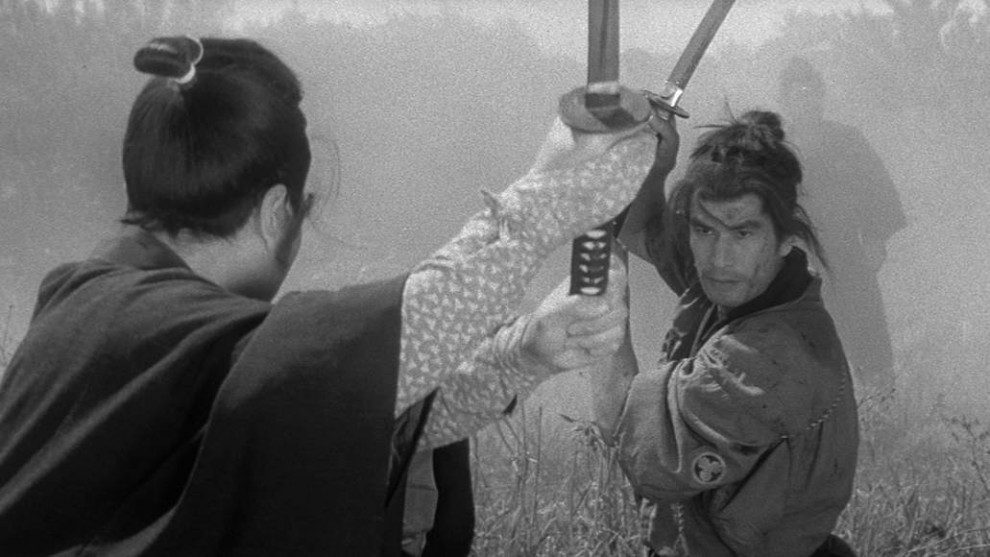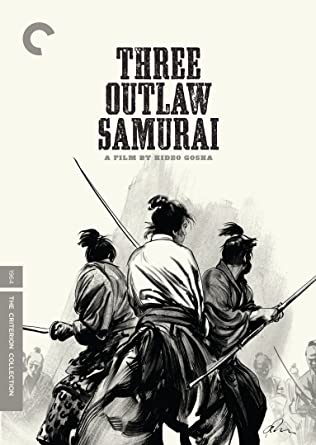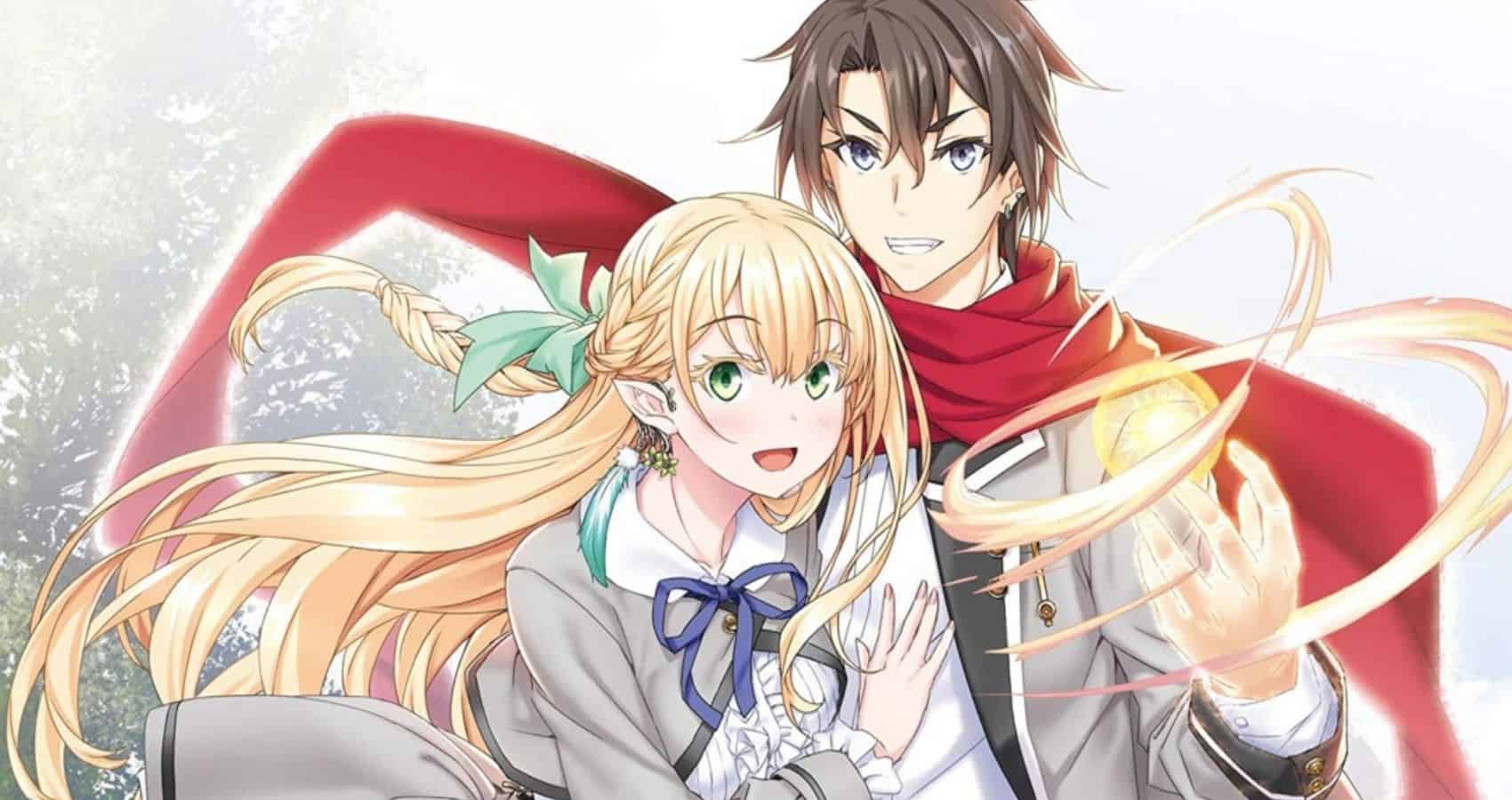In the 1960s, when the Japanese film industry was at the beginning of a fundamental change structure-wise and regarding the stories out on screen, so were the traditional themes, characters and virtues represented by them. However, even the most famous figure of the samurai-genre, Akira Kurosawa, nearly always kept a certain skepticism towards the warrior code, the bushido, and the way it was put into practice, making films such as “Seven Samurai” or “Rashomon” also stories about human weakness and treachery as they are studies about the nature of the bushido, who it kept those with power in their place. Nevertheless, it was not until the 1960s when the tone and the design of the genre would fundamentally change, a reflection of the European version of the western in some way, with directors such as Hideo Gosha delivering their brand of chambara and yakuza films with works like “Three Outlaw Samurai”. Interestingly, the story Gosha tells his viewer is one mindful of its roots, but at the same time has no doubt about the ulterior motives of those in charge, their talk about justice and honor, making “Three Outlaw Samurai” as much a story about the nature of the warrior as much as a story about class struggle and the ideology of the rich.
Buy This Title
At the center of the story, we have the first of three samurai warriors, Sakon Shiba (Tetsuro Tamba), a wandering ronin who, by accident, ends up in an argument between a magistrate and the villagers, mostly peasants, under his rule. In order to demonstrate his harsh rules, three men have managed to kidnap the magistrate's daughter Aya (Miyuki Kuwano) and aim to blackmail her powerful father to give in to their demands. Quickly realizing the three farmers are out of their depth and not trained fighters, Sakon decides to help them and fends off the first wave of attackers sent by the magistrate.
As soon as Aya's father hears about the skilled warrior who has come to aid the peasants, he commands Kikyo (Mikijiro Hira), a samurai under his command, as well as a few criminals and a stranger who has been wandering his land without permission. However, as the man named Kyojuro Sakura (Isamu Nagata), who also has peasant roots, realizes who he is fighting against, he changes sides. With the visit of a high official drawing closer, the magistrate wants to settle the argument quickly without risking disgracing his good name, but as the farmers, now with two warriors on their side, prove to be quite resourceful, the magistrate starts using the code of the samurai against his attackers and even breaks his promises as a samurai.
Perhaps some of the best chambara stories stem from a blend of great spiritual or socio-political themes and an almost minimalist approach towards form. While certainly the fighting scenes, along with the battles, are clearly part of the main attraction, the surrounding story needs to be just as compelling, with many directors, including Kurosawa using only limited means to maximum effect. The majority of the action in Hideo Gosha's “Three Outlaw Samurai” takes place within confined spaces. For example, the beginning is set in a small farm house which appears even smaller due to the position of the camera, the lighting, and the amount of characters in the room. Before the story even fully unfolds, Gosha, in cooperation with cinematographer Tadashi Sakai, has managed to set the mood, the kind of desperation which drove the three farmers to such as measures as kidnapping a helpless girl. In a matter-of-fact tone, the arriving Shiba, claiming he just wants a place to stay for the night and perhaps something to eat, explains the only possible outcome the men can now hope for as they have engaged in an uneven fight which they cannot possibly hope to win, making the room appear even smaller around them, since we now understand what these men must have been going through and how they slowly come to terms with the inevitability of their ultimate demise at the hands of the magistrate, since the powerful will always have the upper hand in the end.
Ultimately, those who profit from the struggle between the rich and the poor are those in between, in this case the samurai. Much like the iconic Toshiro Mifune in “Yojimbo”, characters such as Kikyo, fittingly called “freeloader” by the other two samurai upon their first meeting, has the fitting cutthroat mentality to make quick money out of the misery and the weakness of others, choosing the side of the winner, the side providing better food and drink. Even though, the script, co-written by Gosha, introduces the other two samurai as men of great dignity and honor, it also shows to which extremes their virtues have to be tested or which taboos have to be broken before they realize what is the right side to be on. Being an “outlaw”, as the title already suggests, is the best outcome one can wish for, at least morally, since the powerful and affluent may speak of justice and honor, but their agenda is quite different.
“Three Outlaw Samurai” is a great entry into the chambara genre. Well-shot and -executed while supported by a great cast and wonderfully swift choreography in the fight scenes, this is both an entertaining story as much as it is relevant considering the themes it covers.
















